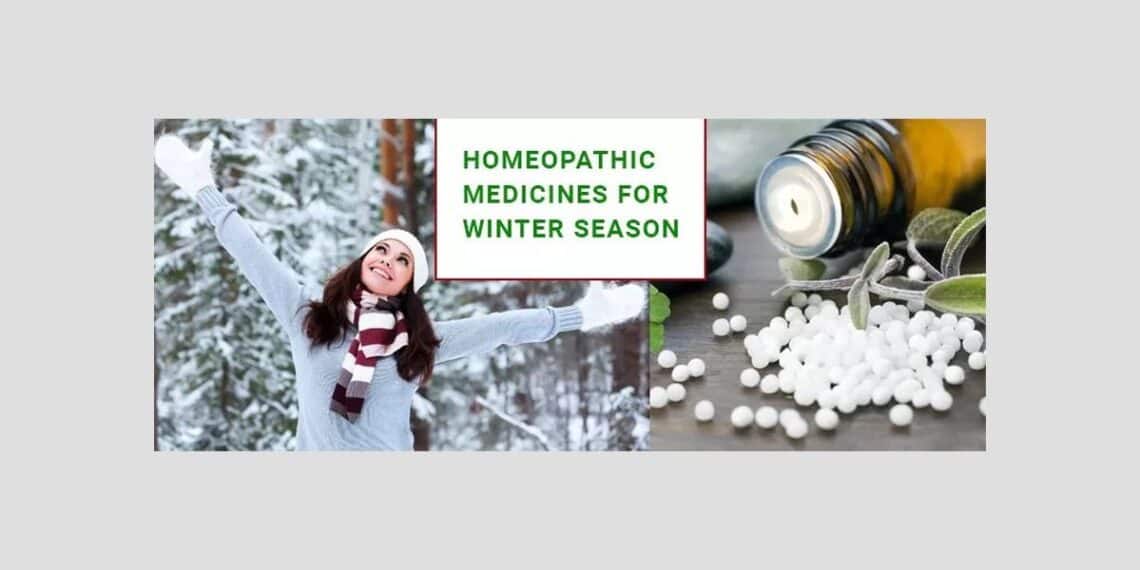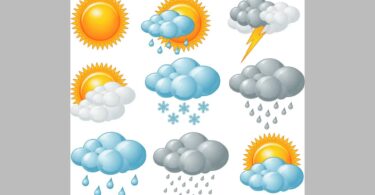It’s great to live in an environment where the temperature variations are not particularly extreme. For most people though, the colder temperatures and weather patterns that occur during winter are associated with a constellation of health problems that can be debilitating, if not deadly. Herbs, supplements, acupuncture, diet and lifestyle changes can provide useful solutions, but for many, homeopathy delivers a rapid response to these problems and is convenient and easy to use.
Following are some of the more prominent ailments that are called to our attention in winter, and some homeopathic suggestions for their relief. Most of the remedies mentioned can be used in a 6C potency three times daily. For any issues that don’t resolve in a reasonable period of time, or those that increase in severity, the services of a qualified and experienced homeopath should be sought.
Arthritis
Actea spicata – Pain in small joints, worse for weather change, cold, touch or motion.
Apis – Redness and swelling, better for open air and cold, worse for heat or touch.
Arnica –Bruised pain, better for rest, while lying down, from wine. Worse from pressure, contact or motion.
Bellis perrenis – Joint pains, worse before storms, hot baths and the warmth of bed, cold bathing and cold wind.
Berberis vulgaris – Rheumatic pain, worse from standing or motion.
Bryonia alba – Stitching or tearing pain, better for pressure, rest or cold. Worse for motion, rising up or exertion.
Camphor – Pains with icy coldness, better for warmth. Worse from motion and cold.
Kalmia – Rheumatic pain that shoots downwards. Pains are better for lying down and worse for bending forward.
Ledum – Pains in small joints that feel cold, yet better for cold, worse at night or from heat.
Phytolacca decandra – Aching soreness or shooting pains, better for warmth, dry weather and rest. Pain worse in the morning, during rain or with damp or cold weather.
Rhus tox – Tearing pains, better for warmth, motion and stretching of affected parts and worse during rest, cold or rainy weather.
Ruta graveolens – Bruised, aching or lame sensation, better for warmth, motion, rubbing or scratching; worse from overexertion, cold or stooping.
Bronchitis
Aconite – Symptoms from exposure to cold and dry cold winds, better in open air, worse at night, in warm room or in cold air.
Bryonia alba – Dryness of mucous membranes with stitching pain better for cold, worse for warmth or motion.
Ferrum phos – Bronchitis in its early stages, worse at night and for motion.
Ipecacuanha – Bronchitis with rattling of mucous, better for open air and rest, worse for warmth and during winter.
Phosphorous – Painful bronchitis with loss of voice or hoarseness, worse in the evening, from inhaling cold air, or a change in the weather.
Sticta pulmonaria – Catarrhal bronchitis, worse for sudden changes of temperature.
Circulation diminished
Camphor – Pains with icy coldness, better for warmth, worse from motion and cold.
Secale – Cold and dry extremities better for cold, uncovering, rubbing and stretching out of limbs, worse for heat or warm covering.
Chilblains
Agaricus – Better for slow motion, worse in open or cold air or before a thunder storm.
Cistus – Worse for the slightest exposure to cold air, or from excitement.
Crot. horridus – Worse in the morning, for cold, or during damp, wet weather.
Hepar sulph – Better in damp weather and from warmth, worse for cold or the slightest draught.
Nitric acid – Worse during evening and night or a change of weather.
Petroleum – Better for warm air and dry weather, worse for dampness or before and during a thunderstorm.
Psorinum – Better for heat, worse for coffee, cold and changes in the weather.
Pulsatilla – Better from open air and cold, worse for warmth.
Rhus tox – Better for warmth and rubbing, worse for cold.
Sulphur – Better for dry warm weather or scratching, worse for warmth.
Tamus – Use low potencies
Common Cold
Aconite – Colds that occur suddenly from cold, dry weather or cold winds, better in open air, worse at night, in warm room or in cold air.
Allium cepa – Colds from cold, damp weather with acrid nasal discharge, better in open or cold air and worse in a warm room.
Arsenicum album – Colds with sneezing and burning of mucus membranes, better from heat and worse from cold or wet weather.
Euphrasia – Colds with much thin bland mucous, better for coffee, worse in warm air and in the evening.
Gelsemium – Acute colds with thin acrid discharge, better for open air, worse for damp weather or before a thunderstorm.
Kali bich – Chronic colds with thick, ropy, greenish-yellow discharges better for heat and worse in the morning.
Nat mur – Colds associated with much thin, watery discharge which begins with sneezing, better for open air, worse for heat.
Quillaya – For the first stages of a cold associated with a sore, dry throat.
Cough
Aconitum napellus – Coughs that occur after exposure to cold and dry cold winds, better in open air, worse at night, in a warm room or in cold air.
Belladonna – Dry ticklish cough worse at night and when lying down.
Drosera – Whooping cough and other spasmodic coughs that end in gagging or retching, worse for lying down.
Ipecacuanha – Incessant, violent, rattling cough that fails to produce sputum, worse from lying down.
Pulsatilla – Coughs that are dry at night, but loose in the morning, producing large volumes of sputum, are better from open air and cold, and worse for warmth.
Rumex crispus – Dry, ticklish cough which is worse in the evening and from inhaling cold air.
Sticta pulmonaria – Dry cough that is worse on inspiration, and worse for sudden changes of temperature.
Depression
Agnus castus – Depression with debility and a feeling of impending doom.
Ammonium carb – Depression with weeping, better in dry weather, worse in the evening and from cold, wet weather.
Aurum met – Suicidal depression which is worse in cold weather.
Causticum – Chronic depression that is better for warmth and worse for cold dry winds, evenings, and a change of weather.
Helonias dioica – Deep depression with irritability, better when for mental activity and worse for fatigue, motion or touch.
Ignatia – Depression with mood swings, worse from consolation.
Natrum mur – Depression with loneliness and introversion, worse for consolation.
Phosphoric acid- Depression with weakness and apathy, better for warmth and worse from cold.
Plumbum – Depression with weakness or loss of memory, worse at night and worse for physical or mental exertion.
Sepia – Deep depression and indifference to loved ones, better for exercise and warmth, worse in the morning, evening and before thunderstorms.
Influenza
Anas barbariae – In the early stages of influenza, use 200C every 3 hours for up to 4 doses.
Arsenicum album – Influenza with exhaustion, better from heat and worse from cold or wet weather.
Baptisia tinctoria – Influenza with sore throat, fatigue and aching muscles, worse from open air and cold winds
Belladonna – Influenza of sudden onset with sore, dry throat, better for rest and worse for draughts.
Bryonia – Influenza with dry throat and excessive thirst, better for cold and worse for coughing or deep breathing.
Eupatorium perfoliatum – Influenza with pains in muscles or bones.
Ferrum phosphoricum – Useful in the initial stages of influenza, better for lying down and worse for cold air.
Gelsemium – Influenza with profound weakness, better for open air, worse for damp weather or before a thunderstorm. Also for ailments from influenza.
Rhus tox – Influenza with stiffness of muscles and joints, better for warmth, worse during rest, cold or rainy weather.
Visit Robert Medhurst BNat DHom at his website :






With climate change, the weather is sometimes very cold and sometimes very hot. What can one take in homepathy to build resistance to this constantly changing climate?